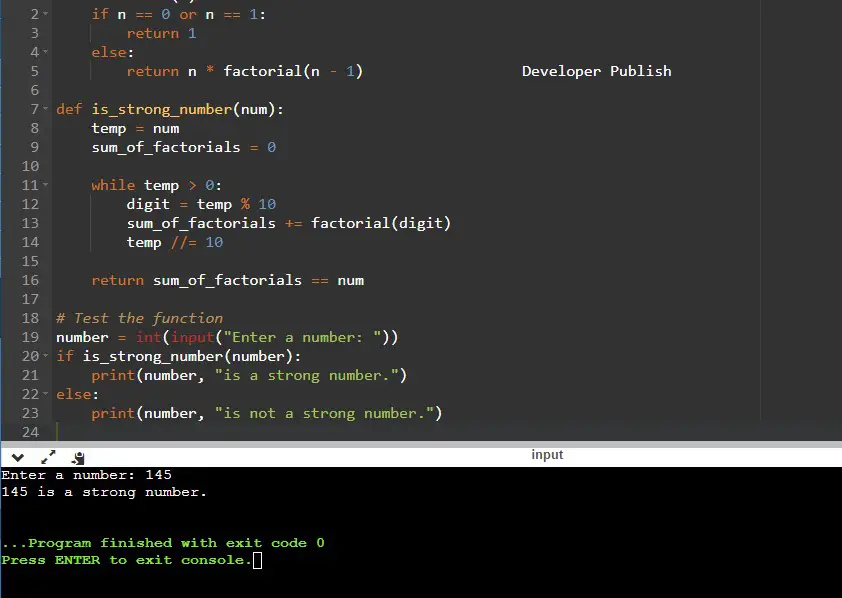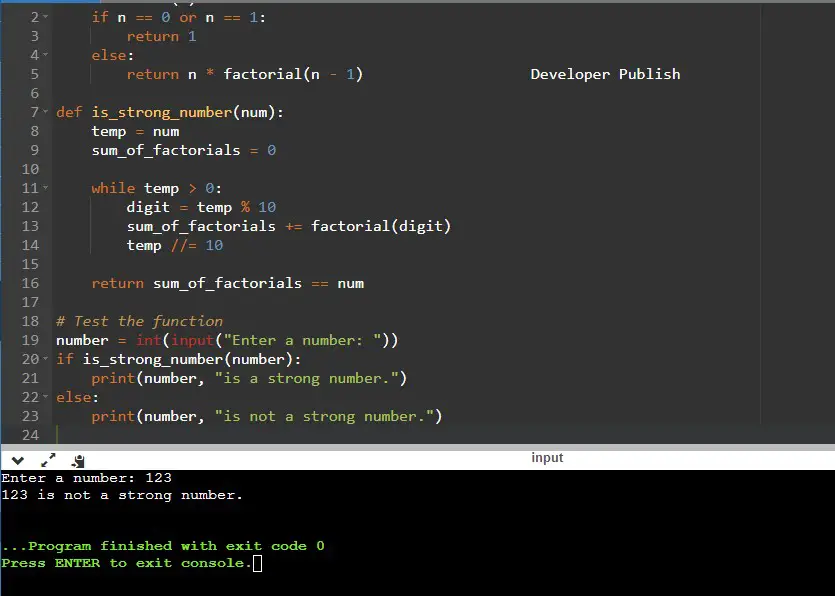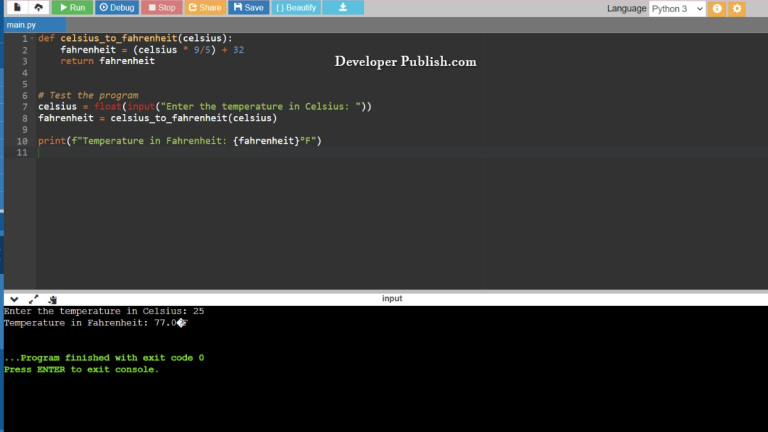This Python program checks if a number is a strong number or not. A strong number (also known as a strong factorial or a digital factorial) is a number that has a special property. The sum of the factorial of its digits is equal to the number itself.
A strong number is defined as a number whose sum of the factorials of its digits is equal to the original number itself. To determine if a number is a strong number, we break it down into its individual digits, calculate the factorial of each digit, and then sum up these factorials. If the resulting sum is equal to the original number, then it is considered a strong number.
Problem Statement
Write a Python program to determine whether a given number is a strong number or not. A strong number is a number that satisfies a specific property related to the factorial of its digits.
A number is considered a strong number if the sum of the factorials of its digits is equal to the number itself. To determine if a number is strong, you need to follow these steps:
- Take a positive integer as input.
- Extract each digit of the number.
- Calculate the factorial of each digit.
- Sum up the factorials of all the digits.
- Compare the sum with the original number.
- If the sum is equal to the original number, print that the number is a strong number. Otherwise, print that the number is not a strong number.
Write a Python function called is_strong_number(num) that takes an integer num as input and returns a boolean value indicating whether the number is a strong number or not.
Python Program to Check if a Number is a Strong Number
def factorial(n):
if n == 0 or n == 1:
return 1
else:
return n * factorial(n - 1)
def is_strong_number(num):
temp = num
sum_of_factorials = 0
while temp > 0:
digit = temp % 10
sum_of_factorials += factorial(digit)
temp //= 10
return sum_of_factorials == num
# Test the function
number = int(input("Enter a number: "))
if is_strong_number(number):
print(number, "is a strong number.")
else:
print(number, "is not a strong number.")
How it Work
The is_strong_number(num) function works as follows:
- It takes an integer
numas input, which represents the number we want to check for strongness. - The function initializes a variable
tempwith the value ofnum. This variable will be used for extracting the digits of the number. - It also initializes a variable
sum_of_factorialsto keep track of the sum of factorials of the digits. - A while loop is used to iterate until
tempbecomes 0. Within the loop:- The last digit of
tempis obtained by performingtemp % 10. - The factorial of the digit is calculated using the
factorial()function. - The factorial is added to
sum_of_factorials. - The value of
tempis updated by dividing it by 10 (temp //= 10) to remove the last digit.
- The last digit of
- After the loop ends, the function compares
sum_of_factorialswith the original numbernum. - If
sum_of_factorialsis equal tonum, the function returnsTrue, indicating that the number is a strong number. - Otherwise, the function returns
False, indicating that the number is not a strong number.
The factorial(n) function is a recursive function that calculates the factorial of a number n. It returns 1 if n is 0 or 1. Otherwise, it calculates n * factorial(n - 1) to obtain the factorial of n.
To test the is_strong_number(num) function, you can input different numbers and check if it correctly determines whether they are strong numbers or not. If the function returns True, it means the number is strong. If it returns False, it means the number is not strong.
Input/ Output




